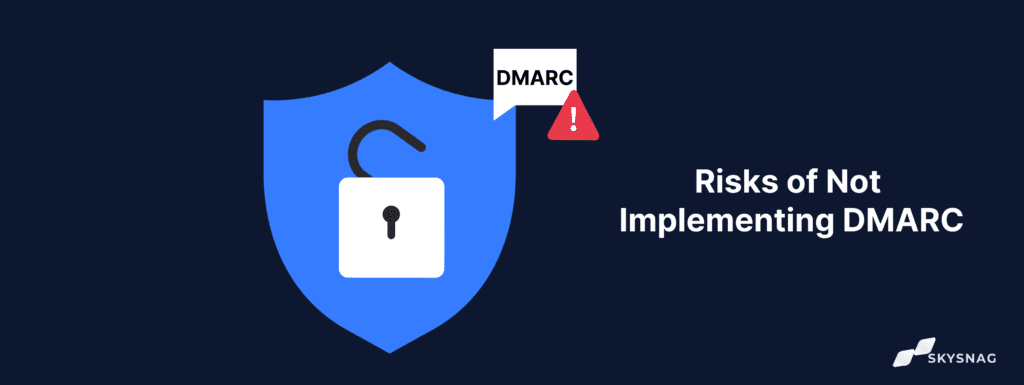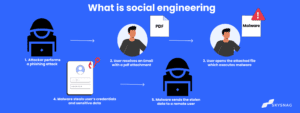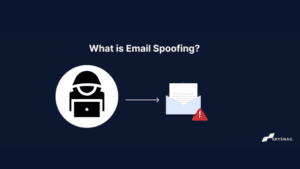Risks of Not Implementing DMARC

Do you know where your domain email comes from? Are spammers trying to impersonate your domain in email communications to gain access to your account and commit fraud? Are you following optimal email practices to ensure optimal email deliverability? DMARC addresses these issues, giving you complete control over email delivery for your company’s domain while minimizing the risks associated with DMARC implementation.
DMARC allows email domain owners to manage how their communications are processed, making it more difficult for criminals to spoof messages and make them appear to have come from a trustworthy address.
What would happen without DMARC?
Email Spoofing
To prevent email spoofing, domains must have an email authentication system implemented. SPF and DKIM, on their own, are not sufficient to prevent impersonation of your domain or email spoofing. DMARC is a security component that helps prevent these attacks. SPF and DKIM protocols are combined to provide 100% protection against exact-domain attacks.
Being a victim of a phishing scam. Phishing is a deceptive method of obtaining confidential information. Hackers trick victims into performing specified actions by impersonating a legitimate person. According to the Verizon Data Breach Investigations Report 2018, phishing and pretexting account for 93% of data breaches. DBIR credentials are used in 80% of all breaches. Phishing attacks can be avoided with the help of DMARC.
Being a victim of a phishing scam.
One of the risks of not implementing DMARC is being a victim of a phishing scam. Phishing is a deceptive method of obtaining confidential information, where hackers trick victims into performing specified actions by impersonating a legitimate person. According to the Verizon Data Breach Investigations Report 2018, phishing and pretexting (the practice of presenting oneself as someone else to obtain information) account for 93% of data breaches, and DBIR credentials are used in 80% of all breaches. DMARC can help prevent phishing attacks and protect your domain from being used in fraudulent emails.
Is lack of DMARC a vulnerability?
The accuracy with which you configure your protocol determines the probability of your messages being delivered to your clients. Existing flaws in your company’s email security posture can make it more difficult for your communications to be delivered, thus increasing the risks associated with DMARC implementation.
The following are some obvious signs that your DMARC authentication scheme has a flaw:
- Deliverability issues with emails
- When using online tools, DMARC error messages flag legitimate messages as spam.
Vulnerabilities in your email authentication system can range from basic syntax problems to more complicated issues. In either case, a lack of DMARC is a weakness, and until you troubleshoot these issues and properly set up your protocol, your email security efforts may be rendered ineffective.
Is DMARC really necessary?
DMARC risks are increasingly relevant in today’s world, especially as remote-working scenarios become more popular and electronic communication becomes the primary mode of business communication.
Skysnag provides user-friendly email authentication and DMARC analysis software and acts as your professional consultant to help you get as close to a reject policy as quickly as possible, allowing you to safeguard your domain’s emails and take control of your email delivery.
Create a Skysnag account to generate your DMARC record.
Here are the five reasons why DMARC is necessary:
DMARC Aids in the Prevention of Impersonation Attacks
DMARC helps protect your emails from fraud and impersonation by reducing the likelihood of business email compromise (BEC) and domain spoofing attacks. Unlike standard integrated security gateways included with cloud-based email exchange services, DMARC allows domain owners to specify how they wish receiving servers to respond to emails that fail to comply with SPF/DKIM email authentication protocols.
DMARC Helps Emails Get Delivered
DMARC has been shown to enhance email delivery by about 10% over time. Using DMARC allows you to maintain complete control over your domain by selecting which messages are delivered to your receivers’ inboxes. This prevents bogus emails from being sent and ensures that authentic emails are always delivered on time.
DMARC Aggregate Reports Assist You in Increasing Your Visibility
DMARC Aggregate reports can assist you in quickly viewing your authentication findings and mitigating email delivery issues. They allow you to see which sending sources and IP addresses are sending emails on your behalf and failing to authenticate. This is another reason why DMARC is essential, as it aids in the detection of rogue IP addresses.
DMARC Forensic Reports Aid in the Investigation of Forensic Incidents
When an outgoing email fails SPF or DKIM authentication, DMARC forensic reports are created. Forensic reports provide an in-depth analysis of harmful sources, such as malicious IP addresses from impostors that may have attempted to spoof you, allowing you to take action against them and prevent future incidences.
DMARC Aids in the Enhancement of Your Domain’s Reputation
A solid domain reputation tells recipient email servers that your emails are real and come from trustworthy sources, making them less likely to be labeled as spam or end up in the rubbish bin. DMARC helps you strengthen your domain’s reputation by validating your message sources and demonstrating that your domain is committed to implementing standard email authentication protocols like SPF and DKIM to enhance email security.
What is the purpose of DMARC?
DMARC allows a company to publish a policy that describes its email authentication processes and provides receiving mail servers with instructions on how to handle messages that fail authentication checks. Although email fraud is far from the only cyber risk, it is the most common attack used by cyber thieves, resulting in DMARC risks if DMARC is not properly implemented.
Here are the purposes of DMARC:
To give your customers confidence in your emails
DMARC helps prevent email spoofing and phishing attacks by providing a mechanism for email authentication. By verifying the authenticity of messages sent from your domain, DMARC can help build trust with your customers and prevent cybercriminals from using your brand to carry out fraudulent activities.
To protect your company’s reputation
Email fraud can damage your company’s reputation by making it appear as though your domain is being used to send spam or fraudulent emails. DMARC can help prevent this by allowing you to specify which messages are authorized to be sent from your domain and which ones should be rejected or quarantined.
To prevent fraud at the highest levels of government
DMARC provides protection against ‘Whaling’ attacks, which are aimed at high-level executives and designed to gain access and authority within a company. By preventing the delivery of these attacks, DMARC can help maintain the security and integrity of your domain.
Skysnag’s automated DMARC solution strengthens protection against phishing and spoofing by verifying that an email message originated from the claimed sender domain. Skysnag generates DMARC reports that help investigate security issues and identify potential risks from impersonation attacks. Sign up for a free trial today using this link to get started with Skysnag and enhance your email security, improve your email deliverability, and protect your domain from email fraud.





